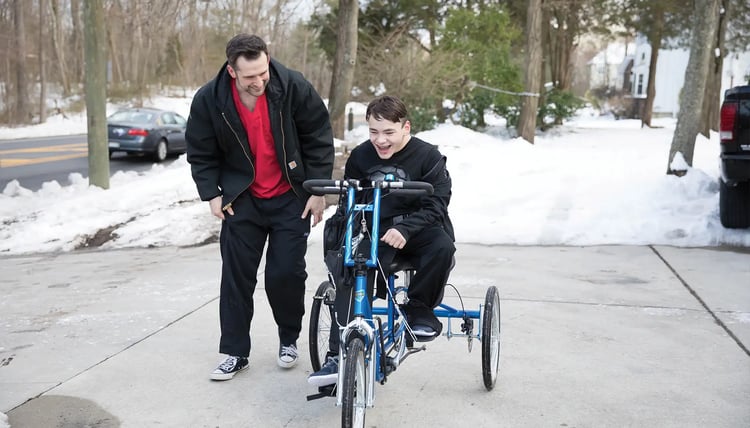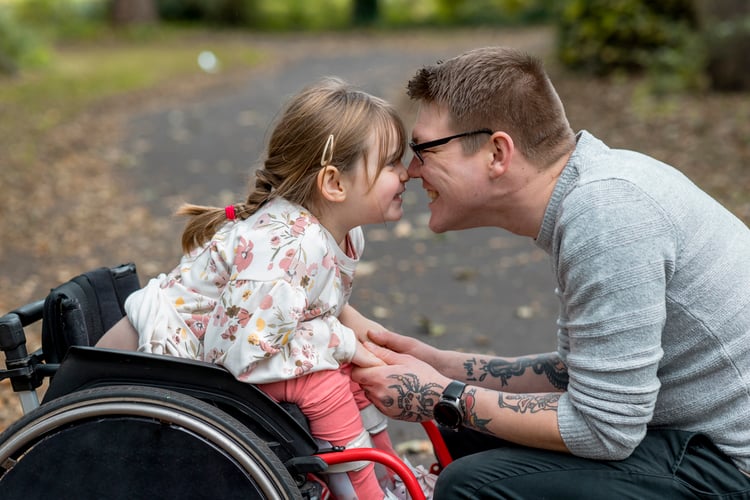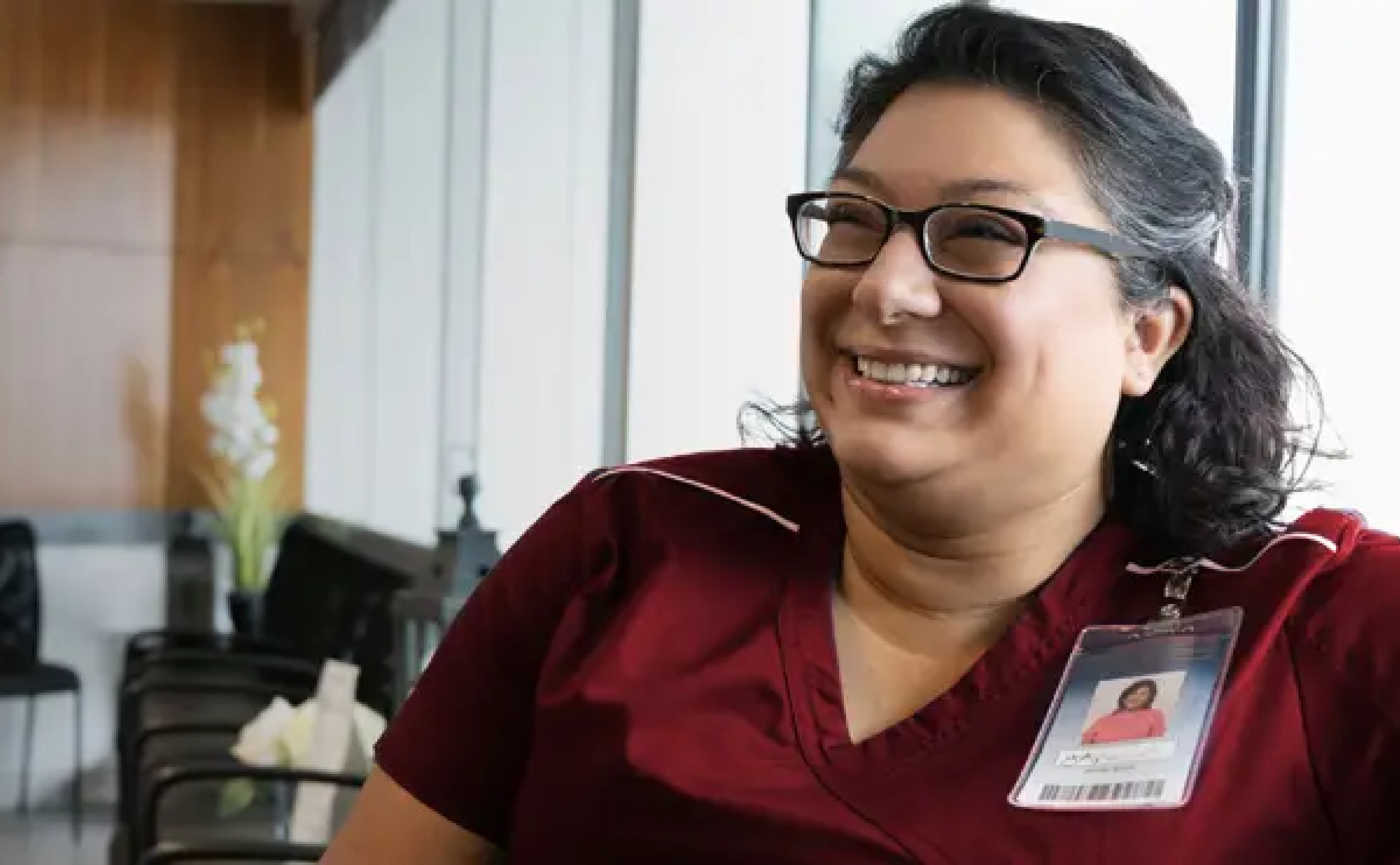How BAYADA Evolved from Episodic Listening to Continuous Conversations
How BAYADA Evolved from Episodic Listening to Continuous Conversations
BAYADA is founded on the principle that healthcare gets better when people get better care at home — the place where they feel best. The organization’s thousands of nurses, therapists, aides, clinical leaders, clinicians, caregivers, and support staff deliver the highest quality home healthcare services available, helping people remain safe and independent at home for as long as possible.
Founder J. Mark Baiada started the organization in 1975 with $16,000 and a belief that everyone deserves a better quality of life in the comfort of their own home with independence, and dignity. Since then, that core belief has led to BAYADA delivering care services to more than one million people of all ages across eight countries. At the heart of all BAYADA operations is The BAYADA Way, the foundational principles of the organization's caring culture and the guiding force behind everything it does. Each member of the BAYADA family plays an important role in the delivery of care, and their connectedness to the organization’s mission as well as each other significantly elevates the quality of that care.
In the absence of a world-class listening program, however, determining precisely how connected employees are to the company’s mission — and to each other — was a difficult undertaking. With that in mind, BAYADA partnered with Perceptyx in 2019 and began the process of evolving their listening program from an episodic and fragmented series of processes into a holistic, continuous conversation at scale with their employees.

Laying the Groundwork with Perceptyx
BAYADA has two distinct groups that comprise its workforce — approximately 25,000 clinicians and caregivers and roughly 5,000 support employees, known as office employees. The office employees, in turn, are split between those who work in corporate administration and support — HR, finance, IT, etc. — and those who work in offices based in local communities, directly serving and supporting the daily lives of the client population.
When Melissa Tempio assumed her role as BAYADA’s Director of Employee Engagement and Organizational Development in October 2020, she quickly grasped how the distributed nature of the workforce presented a unique challenge — one further complicated by the safety demands of the COVID-19 pandemic. “Employees will go to their service office to pick up supplies, check in with the director and their managers, and have team events, but the majority of their time was spent within the homes of clients or other facilities like schools and senior living communities.”
Unlike the office employees, who had ready access to computers and other devices, the majority of the workforce wasn’t in a position to be easily surveyed for listening purposes. “These employees are mobile, they travel, they don’t have set locations, and with a few exceptions, they really don’t have computers.”
Strategic Talent Partner Katelyn Buttler was with BAYADA prior to Tempio’s arrival and recalls the selection process that led to the organization’s partnership with Perceptyx. “At the time we were trying to figure out what to do with our listening strategy. There were disconnected surveys throughout the year, inner office surveys, and our yearly all-employee census survey.”
For Buttler, one of the biggest challenges with the old internal forms of surveying was that employees didn’t see it as completely confidential. “It was coming from a BAYADA office. BAYADA employees were looking at the information. I think that participation rates at the time were in the 20% to 30% range, very low, with mostly office employees participating. That’s where we were.”
BAYADA chose Perceptyx because it needed to partner with a provider that could elevate the organization’s listening strategy. “We needed something that could grow with us, something the employees saw as confidential and safe, and that delivered data we could use to take action. That’s what we needed in a provider, and Perceptyx sealed the deal by being willing to listen to where we were as an organization and meet us at that point, then begin slowly walking us forward. I know a lot of other companies wanted to really pull us forward right from the jump, taking us 20 steps when we were ready for five. Perceptyx also took the time to understand our complex, multi-matrix environment — our diverse population of field and office employees,” Buttler said.
Most importantly of all, Buttler explained, Perceptyx’s consultants worked to understand The BAYADA Way. “This is our company philosophy and the ever-present guiding force in our daily work. We wanted Perceptyx to really take that to heart. They were the first vendor that understood what we were trying to do, and it went far in starting conversations.”

A Comprehensive Plan for Continuous Improvement
When Percepytx began working with BAYADA, the organization’s internally-managed listening program had outlived its usefulness and now presented a series of challenges. Melissa Tempio describes this listening program as “episodic” and “fragmented”:
- A single annual employee satisfaction survey
- Numerous manual operations managed internally
- Disparate lifecycle surveys
- Heavily restricted access to employee feedback
- Compliance-heavy processes
Upon arriving at BAYADA in October 2020, Tempio assessed the situation and, in conjunction with Perceptyx, offered her blueprint for change:
- Transparent and timely access to survey results
- Fewer compliance-related, check-the-box action planning requirements
- Accountability aligned to survey items
- Tracking organizational trends on an annual basis and team trends — which may change more quickly — on a quarterly basis
- Empowering leaders to have continuous conversations that go beyond the numbers
Perceptyx jumped in and ensured that the evolution proceeded smoothly. “Just seeing a dashboard for comparisons was, at least for us, like we were in a whole new age,” said Katelyn Buttler. “Something that’s important for anyone else reading about our situation is that we had just transitioned over to Workday, so we needed a provider that could integrate with Workday and all of the other systems we use. We have many systems we use for our field and office employees, and some vendors were not comfortable with that. But Perceptyx listened and said, ‘We can handle it, we’ll make this work, we’ll integrate where we need to.’ And that proved to be a huge piece of the puzzle.”
Reaching Across the Organization
Another piece of the puzzle — essential to ensuring that the evolution of the listening strategy occurred as planned — involved reaching the field employees. “The voices of our field employees weren’t coming through as we needed them to, and that was crucial for us,” Buttler said.
"That increase has been dramatic," said Melissa Tempio. “Over the past year and a half, across quarterly employee experience surveys instead of a single annual employee satisfaction survey, we have been able to increase those low participation rates of 20% and 30% up to 55% [which is a significant increase for BAYADA due to the challenges of surveying a field-based employee workforce]. Initially, with Perceptyx, we had gotten that number up to 50% through a unique survey link we were sending through email and text, but not all of our field employees log into their email and many ignore texts from an unfamiliar number.”
The solution, Tempio explained, involves the use of other communication systems employed by BAYADA. “We introduced a sharable link that’s protected by a password and through that link, our directors can utilize those 30 or so other employee systems to post a sharable link in a secure chat feature we use, as well as in other similar features of those systems. That accounted for the additional 5% increase in participation, which is a major improvement, given how hard it can be to reach people in the field.”

Listening More Frequently
While increasing survey participation, BAYADA has also successfully moved from an annual survey to quarterly surveys. “I think there was a fear that participation would decrease, a huge fear around survey fatigue,” Tempio said. “However, we shifted that conversation away from worrying about surveying so much that people would stop responding to thinking about how to respond to the feedback we get. As long as we’re listening to our employees and let them know that we’re listening, we’ll continue to see participation increase.”
“Previously, we would survey once a year and share the results during a webinar,” Katelyn Buttler said. “Leadership wanted to start doing this more frequently, which would let us move quicker on action items that come up in the survey.”

Listening to the Needs of the Pandemic
The listening process continues to evolve, Tempio reported. Initially, the plan was to do a longer, traditional annual census survey as well as three pulse surveys — with the annual census used for action planning and the pulses providing ways to check on that plan. COVID shifted those plans. As a result, the listening strategy for 2020 added a COVID keep-in-touch survey to determine employee sentiments about proper PPE provisioning as well as working from home for those employees who were able to do so.
“Before COVID, BAYADA believed strongly in the idea of being an in-person business. Everyone worked in-person or on-site. We had the field employees going to homes and we also had a corporate headquarters and the service offices where people went to work. It was baked into the culture,” Tempio said.
COVID-19 shifted those plans, Tempio explained. “The surveys we administered during COVID were pivotal in shifting that mindset, and everybody was sent home for a very long time. Support office employees who typically sat in the corporate headquarters were sent home and worked remotely, and to this day we have more flexibility in terms of deciding about that.”
“Overwhelmingly, when we surveyed whether employees felt comfortable going back into the office, the answers came back no — they weren’t comfortable yet,” said Katelyn Buttler. “Our CEO David Baiada started doing weekly town halls where he’d pull up our survey results and say, ‘Here’s what you folks are saying. You’re not feeling safe, you’re not feeling comfortable? Okay, let me address that now. You don’t know where to go for supplies? We’re going to take action on that.’ The survey results completely changed the way leadership was able to communicate to the employees.”

COVID-19 Changed the Culture
When Melissa Tempio joined BAYADA in October 2020, she understood that she had a long road ahead of her in terms of altering the organization’s episodic and fragmented approach to listening. The challenges presented by the pandemic, though, forced BAYADA to make some of those changes more quickly. “If the pandemic hadn’t happened, there would probably be a lot of conversations about why we needed to pulse, why we needed more surveys, and why this was an emerging trend in the industry. But when I got here, people were asking for more surveys and were much more involved.”
With the worst of the pandemic now over, Tempio can focus more strategically on the long-term implications of moving up the listening maturity curve. “As we get back to normal, we can’t forget about the importance of transparency. So we’re having conversations with our leaders to really set expectations around action planning, getting back to the original purpose of why we do quarterly surveys and what the expectations of our leaders are to use these surveys as a way to check in on their action plans. We have to solidify our listening gains and continue making forward progress.”

Open Access to Listening Data
All this listening data is now much more accessible to leaders. “Prior to Perceptyx, data access was restrictive and it was on an internal dashboard that was hard to navigate,” said Melissa Tempio. “When we initially launched with Perceptyx, we limited access to directors and above, and only allowed them to see the people who reported to them in Workday. For example, if a director had 50 people reporting to them in the Workday system, they would see responses for those 50 people.”
Due to numerous dotted-line reporting relationships and what Tempio calls the “highly matrixed” nature of the organization, BAYADA decided to provide open access to the entire dashboard so that all directors now have access to the whole organization and only have to run a simple filter to get the results they want. “As a strategic talent partner, it is a big piece of our role to be able to go in and see our whole practice, a division, or an office, so this truly made us partners in helping the offices and practices do their action planning,” said Katelyn Buttler.
This action planning, Buttler explained, is heavily dependent on Perceptyx’s data-driven insights. “We’ll look at a practice level for each of us as strategic talent partners to see what the big themes are this quarter, and then look to see if a specific office is not doing great — it’s in the red, data-wise, for multiple quarters — we can target it to figure out why it keeps scoring low on, say, three particular questions. I love how you can pull action plans and presentations straight from the dashboard. It’s a wonderful feature, making it so easy to understand your results.”
As for organization-wide communications, BAYADA has multiple avenues for that information. “We have internal newsletters and the ‘all directors’ e-blast, as well as specific communications that go to everybody in the organization or all the directors in the organization,” Tempio said. “All of these communications that go out — reminders, emails, invitations, and even the intro pages of the surveys we send — are designed to remind everyone that we’re always in the process of responding to their feedback to ensure it gets the recognition it deserves.”

Perceptyx’s Personal Touch
For Melissa Tempio, the partnership with Perceptyx goes far beyond state-of-the-art software. Access to white-glove consulting has given Tempio a second set of eyes to review data and double-check her own proposed solutions. “I’ve said before that I work with Perceptyx more than BAYADA sometimes. I’m always talking to them or checking in, working together on different projects, and it’s helpful to have a team working with you rather than just an implementer or a customer service number that we would have to call to put in tickets. The ability to have a full team to rely on and work with makes a huge difference.”
For example, when Tempio is researching industry benchmarks and best practices, she might reach out if she sees an increase in one of BAYADA’s survey items. “Recently I saw a huge increase in one of our benchmark items, so big that we’re calling it a statistical anomaly, so I’ve talked to the consultants at Perceptyx about this. I’ve also worked with them on metric updates and items that are going to our board, items that are on our balanced scorecard that were leaving the surveys a bit unbalanced and not providing enough useful, actionable feedback for our directors. It’s a lot of thought leadership, thought partnership, and everything that comes between that.”
Making Progress: It’s All about the Process
When considering the trajectory of BAYADA’s Perceptyx partnership, Melissa Tempio has advice for other organizations looking to start a similar journey with an enterprise-class vendor. “When I presented at Perceptyx’s INSIGHTS conference, I talked with our consultant about the process through which we moved from annual census surveys to continuous listening. When we launched in 2020, were we super ready to do this? No, but we’re figuring it out along the way. I think all organizations have to get to a point at which they realize, okay, we’re just going to do this anyway and we have to get comfortable with the uncomfortable, then plan to continuously evaluate and improve. There’s an art to knowing when to rip the band-aid off.”
For Tempio, getting the right listening technology in place has proven transformative, opening the frame for the continued evolution of the organization’s listening strategy. “If you have the technology in place, you have something to lean on as you have all these thought-provoking, high-level conversations about getting the culture to a place where we as an organization are continuously listening and acting on what we hear from our employees. 2023 is hopefully going to be our most intentional and organized year of listening yet, where we’re bringing together candidate experience, exit surveys, and a proposed new hire survey that follows more of an industry-standard approach. We can begin drilling down on what the most important areas are in the candidate and employee lifecycles and thinking about how we get ahead of them to make the experience as meaningful as possible. We’ve already got a really strong foundation for listening in place to build on.”
In reflecting on her own perceptions of working with Perceptyx, Katelyn Buttler was struck by how the partnership has honored the company’s past and its core values while trailblazing a path for the future. “Perceptyx came in and created this sustainable way of using the listening history we have while getting us much closer to the voices of all our employees, making sure these essential workers can let us know how they’re feeling so we can let them know we’re acting on their responses. I believe we found Perceptyx at the right time. You’re paying tribute to where we came from and to The BAYADA Way while also helping us pull this listening piece of our culture forward.”

About Bayada Home Healthcare
Founded: 1975
Industry: Healthcare
Corporate Headquarters: Moorestown, NJ
Employees: 29,000
Website: www.bayada.com
Customer Success Snapshot
The Challenge:
- The company’s internally-administered annual census survey had low response rates and employees were concerned about confidentiality
- Manual data management consumed thousands of hours of back-office administrative time
- Restricted access to survey data limited its value for action planning
- Existing HR technology investments, including Workday, were not integrated with listening data
The Solution:
- The annual census survey has been supplemented by quarterly engagement pulses sent to the company’s distributed workforce through a variety of formats in conjunction with Perceptyx’s messaging about confidentiality
- Perceptyx’s easily filtered dashboards greatly reduced the time spent analyzing and visualizing data
- Leaders across the organization now have access to all listening data
- Perceptyx integrated data from BAYADA’s Workday HRIS, while ongoing consulting enabled HR leaders to discuss best practices and identify opportunity areas for action
The Outcomes:
- BAYADA adopted a continuous conversations approach, strategically listening and then acting on feedback from more employees across more listening events each year
- Despite taking more surveys overall, company-wide participation has increased, ensuring more voices and feedback are heard
- With Perceptyx’s turn-key reporting features, business partners and managers can focus more of their time on communicating the data to their teams and taking action
- Action planning can now occur at all levels, which has helped create a culture that uses data-driven insights to solve business problems
More Customer Testimonials

IGT: Customer Testimonial
Hear from Mariangela Battista, Ph.D., IGT’s VP and Global Head of Talent Management.
Watch Video about IGT Customer Testimonial
Select Medical: Customer Testimonial
Hear from Brett Proulx, Select Medical’s VP of HR.
Watch Video about Select Medical Customer Testimonial
Yuma Regional Medical: Customer Testimonial
Hear from Israa Khan, YRMC’s Director of Organizational Development.
Watch Video about Yuma Regional Medical Customer Testimonial